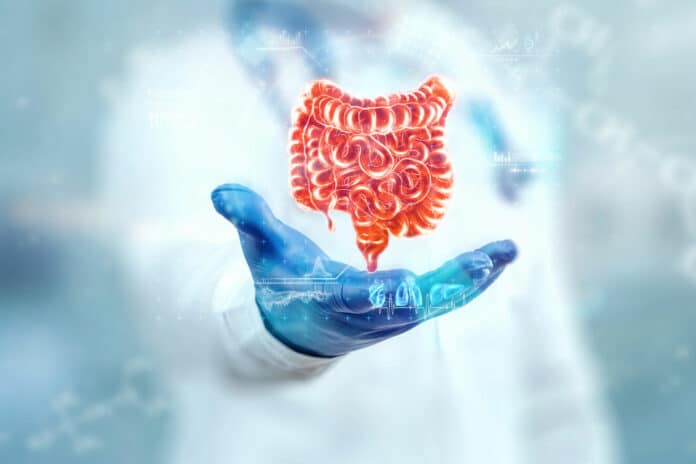New Study Reveals a Better Way to Understand Microbiome: Reverse Metabolomics’ Breakthrough! Instead of focusing solely on the microbes, researchers at the University of California San Diego are now looking at the molecules these microbes produce.
Published on December 5, 2023, in Nature, the study introduces “reverse metabolomics,” a groundbreaking approach that combines organic synthesis, data science, and mass spectrometry to identify the molecules released by the microbiome and understand their impact on human health. This method aims to overcome the challenges of traditional metabolomics studies, which can only capture about 10% of the molecular data from a human microbiome sample.
In their first use of “reverse metabolomics,” researchers discovered hundreds of never-before-seen molecules in the human body. This groundbreaking data led to the identification of a new signature for inflammatory bowel disease (IBD). The researchers believe these molecules could become a future biomarker for diagnosing IBD or a target for potential treatments.
Senior author Pieter C. Dorrestein, Ph.D., professor at Skaggs School of Pharmacy and Pharmaceutical Sciences at UC San Diego, said, “We know the microbiome is important, but we don’t know what kinds of molecules the microbes produce or how influential they are in the human body. Reverse metabolomics helps us evaluate whether specific molecules can be found in the samples, predict which microbes produce them, and relate these metabolomic signatures to health and disease.”
In regular metabolomics studies, researchers use mass spectrometry to find different molecules in a sample. Each molecule has its own “barcode” for identification, but understanding these barcodes can be challenging.
In a new approach, researchers at the Dorrestein Lab took a different path. Emily C. Gentry, Ph.D., the first author of the study and now an assistant professor at Virginia Tech, created thousands of synthetic molecules with known barcodes through organic synthesis. These barcodes were then searched for in publicly available metabolomics data, including Crohn’s & Colitis Foundation data. The study discovered 145 synthetic bile acids in the public data, with 139 never identified.
Dorrestein said, “If you read a biology textbook, none of these molecules will exist. They are new to our understanding of human physiology and entirely new to science, which is pretty amazing.”
Gentry and her team compared the metabolic signatures of samples from various patient groups. They discovered a strong link between a group of lab-made microbial molecules called bile amidates and Inflammatory Bowel Disease (IBD). This connection was confirmed across different patient cohorts, suggesting these molecules likely play a role in IBD.
Upon closer examination, the scientists observed higher levels of specific bile amidates in Crohn’s disease patients, especially during active symptoms, but not in those with ulcerative colitis. These patterns could aid in distinguishing and diagnosing specific types of IBD.
Further investigations revealed that some bile amidate compounds may contribute to gut inflammation by disrupting T cell function. For instance, one microbial compound caused a six-fold increase in a crucial cytokine associated with the development of Crohn’s disease.
“We’re using organic synthesis and data science to understand how our bodies function at a molecular level,” explained Gentry. “Our study is among the first to uncover new human molecules using publicly available metabolomics data. As more data becomes accessible, reverse metabolomics will become even more insightful.”
The researchers believe the molecules they’ve identified could inspire new treatments for Inflammatory Bowel Disease (IBD). For instance, patients might receive pills with live microbes producing specific molecules or drugs inhibiting enzymes that interact with these disease-related molecules.
“This achievement stems from our precision nutrition initiative, where Dr. Dorrestein previously showed that reverse metabolomics could identify food metabolites linked to disease severity in IBD patients,” noted Andrés Hurtado-Lorenzo, PhD, senior vice president of Translational Research & IBD Ventures at the Crohn’s & Colitis Foundation. This groundbreaking work has advanced to discovering new metabolites with the potential to diagnose and treat IBD.
In conclusion, the groundbreaking use of reverse metabolomics has led to identifying a potential biomarker for Inflammatory Bowel Disease (IBD). The newly discovered molecules offer promise for future diagnostics and therapeutic applications in IBD, showcasing the potential of this innovative method in advancing our understanding of human health at the molecular level.
Journal reference:
- Gentry, E.C., Collins, S.L., Panitchpakdi, M. et al. Reverse metabolomics for the discovery of chemical structures from humans. Nature. DOI: 10.1038/s41586-023-06906-8.
